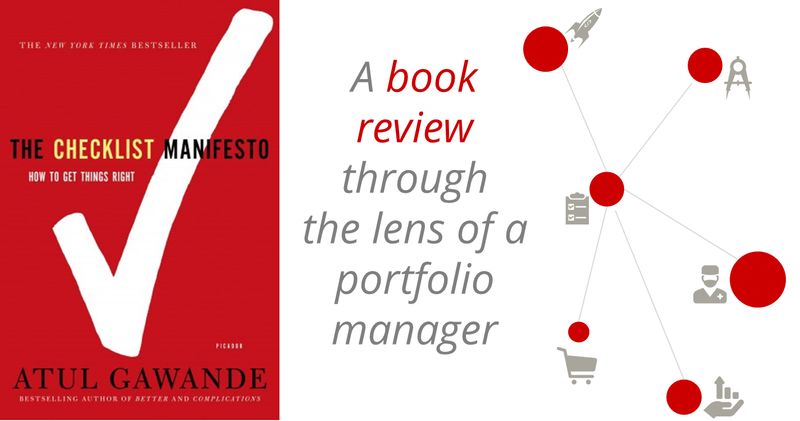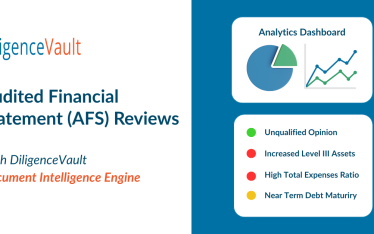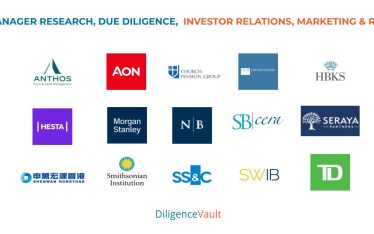Atul Gawande’s 2009 book “The Checklist Manifesto: How to Get Things Right” details the author’s search across disciplines for ways to improve process outcomes, looking for techniques that could be applied in his own field as a cancer surgeon. His findings are relevant to the investment process and due diligence.
Like a Surgeon
Gawande came to do broad research on checklists when he was tapped to head a major research project under the auspices of the World Health Organization (WHO) to improve the safety and process outcomes of surgery around the world. The result of that project was a surgical safety checklist robust enough that it could be adapted by very wealthy and very poor hospitals alike.
There are 2 basic kinds of checklists:
1. Do – Confirm Checklists ensure adherence to routine procedures. They make sure that none of the basic steps of a process are skipped so that a process outcome is as fail-safe as possible under routine conditions. For an investment process, this might include verification of basic track record, as well as all other standard information that an investor would want to verify for a fund or a manager. A due diligence questionnaire is really a long-form checklist to show the work has been done and record the information. The questionnaire ideally is divided into different sections, for example pertaining to investments and strategy, operations, business, service providers, etc., to support a ratings system that quantitatively evaluates each aspect of a fund and its manager.
2. Read – Do Checklists deal with abnormal situations. They tend to be used when something unexpected has happened or something in the operating environment has gone wrong. These are more like a recipe, giving specific instructions to be followed. For investments, this might take the form of a fund review triggered by loss of a ‘key man’, or in the event of a significant drawdown. In a questionnaire or Request For Information, relevant questions may have a nesting structure, with certain answers or updates prompting follow-ups with the manager and a formal review process.
Ready for Takeoff
Gawande began his search by working with leading systems researchers and practitioners in aviation, which for obvious reasons has some of the most advanced safety policies and procedures in the world. Perhaps not coincidentally, it also happens to be the most advanced field with respect to its use of checklists.
Pause Points
A given workflow often has “pause points” – in the aviation industry, these are points at which the whole team must run through a series of checks before proceeding with the flight. Gawande’s surgical safety checklist is broken out into 3 discrete phases with pause points: 1) before induction of anesthesia; 2) before skin incision; and 3) before the patient leaves the operating room. Completion of the checks and the necessary communication among the team ensures that it is safe to proceed to the next stage.
Other workflows have pause points as well, often around approvals for a product or process to move to the next stage. In an investment research process, for example, there are multiple stages of research and approvals. There may be initial research done into the investment strategy and process. If the findings are of interest and meet certain approvals, then there may be an on-site review of the manager’s operations, with further reporting and approvals focused on operational due diligence, etc. Each of these is an independent part of the process with relevant documentation. The final investment should have each stage completed and approved. Moreover, each stage should have veto power over the investment based on their findings.
The Master Builder
Gawande gives the example of architecture and construction as a complex process that is broken out into checklist-oriented segments bound by pause points of communication. Through much of recorded history, large construction projects were overseen by one individual, the Master Builder. However, about a century ago, the sophistication in so many aspects of construction had advanced to such a degree that it was no longer possible for one individual to master them all: from architectural & engineering design to finish carpenters, some 16 different specialist trades collaborate on a typical construction project.
The trade specialists working on an office building could have the attitude that others should not interfere in their domains. However, the project overall is a complex orchestration of critical functions that cannot fail and that must be carried out in coordinated fashion. All the separate contributions of hundreds or thousands of people need to be included in the project master plan. They need to make sense for the whole, and they also have to be exercised precisely and in coordination – at the right time, in the right way. Coordination among these specialists is hugely complex. It is also necessary. In this kind of environment, autonomy would be a disaster.
Submittal Schedule
A solution is the “submittal schedule”, which is a different kind of checklist that specifies not construction tasks, but communication tasks. This ensures that the different trades talk to each other to deal with any unexpected developments and communally agree on a solution and a path forward. While the specialists may not foresee what specific problems might arise, their expertise gives them a sense for when they might occur. In its essence, the submittal schedule is a communication checklist that details the information that the specialists must submit before the project can move forward. Rather than assuming that all will go according to plan for construction, the submittal schedule actually assumes that it doesn’t! Instead, it ensures that the right people are putting their heads together to approve the project forward. The focus is on tracking and communication. It is not the decision of any one Master Builder, but rather of the group.
Architecture abandoned the Master Builder and adopted a process to make sure that they get things right. And even though buildings are now more complex than ever, construction times have been shortened. The time saving is also attributed to the efficiency improvements of checklists.
Gawande notes that a lot of industries still exist in the Master Builder era, including medicine. Given the cult of personality around ‘star’ investors and managers, the same may be said for the investment industry. However, as securities, strategies, regulations, and operations have become increasingly complex, expertise in due diligence is needed. IDD, ODD, Risk DD, forensic accounting expertise, along with separation of powers on a central collaboration platform are now leading-edge capability. Ideally this functionality is carried out with a time-stamped audit trail.
Democracy at Work
A checklist also serves to distribute power throughout the team. A common response to risk is to centralize power and decision making. However, a command and control system tends to work best when a quick reaction is needed to a limited problem. In the face of a complex problem like the Hurricane Katrina relief effort, command and control was a disaster. A different kind of system that utilizes the full expertise of the collective has been embraced in multiple fields. The philosophy in play pushes decision making away from the center and out to the periphery. It is democratic, rather than autocratic. There must be room for judgment by each specialist on the team, but aided and enhanced by procedure.
Surgical checklists now have nurses performing clearing functions. In a subtle power shift, the surgeon cannot start the procedure until the nurse clears it. Other team members have the power to hold up the operation until all necessary steps have been completed. Particularly in large hospitals, it is often the case that the members of a surgical team do not know one another. However, research shows that they work together better as a team if they do a pre-operation round of introductions, stating their names and specialties, as well as any unique considerations regarding the patient and the procedure. This serves two purposes: it empowers all team members to contribute their expertise, and it makes the others on the team aware of risks and conditions they might not otherwise know about. The initial communication helps the surgical team anticipate complications and improves their success in safely treating the patient.
In the same way with investing, a robust due diligence process includes building a bottom-up diligence funnel. It incorporates the research of all team members into the fund manager’s operations, while maintaining the top down views. All contributions can be weighed and included in the final investment decision.
Characteristics of a Good Checklist
Good checklists are brief, practical and precise. They don’t spell out everything, only the most critical steps. Also, it helps that the checklist fits on 1 page. It should not be overly long – a common recommendation is 5-9 items. Gawande’s surgical safety checklist has 3 phases in its workflow, broken up by the pause points; each phase contains items in the 5-9 item range. There is an innate tension between brevity and effectiveness. The checklist should also be tested extensively. Not everything needs to be mentioned. Only the most critical things.
Implementation and institutional buy-in are another hurdle to be dealt with on the way to implementing a checklist. Gawande’s approach involved ensuring that any institution involved in his program had active buy-in from top leadership. Also, rather than force acceptance, his team asked for it, and backed away in the face of strong opposition. The guiding philosophy was that a lot more damage could be done by an active, exorcised opponent of the program than not having it implemented at all. It was notable, however, that when asked if they were to undergo surgery themselves, hospital staff voiced a clear preference that a checklist protocol be utilized for their own procedure.
Checklists for Investment
Gawande also did some research into investment, including mostly less well-known investors but also reviewing successes and failures of Warren Buffett. He found that the human brain works against rational analysis when presented both with the lure of great riches or the fear of great losses. Investors may tend to depend on intuition and cut corners more than they would like to admit. Also, the more time they spend on an investment, the more ‘invested’ they are, becoming less able to view it dispassionately.
Gawande’s research subjects found that those managers who employed checklists improved the outcomes of their investment programs with no increase in skill. While the utilization of a checklist increased the time spent up front, in the end, the team could review a larger number of investments in less time because the process was more efficient. They were not wasting time where they should not be, and therefore moved faster. Gawande’s tantalizing mention of research into successful investment by PhD psychology student Geoff Smart makes the reading list for future; his finding also was that checklists improved performance of venture investors.
Professionalism
Gawande reflects that all learned occupations, like investment management, have codes of conduct that generally include: 1) an expectation of selflessness; 2) an expectation of skill; and 3) an expectation of trustworthiness. The aviation industry is unique in requiring a fourth expectation: discipline, exercised in following prudent procedure and functioning with others.
Gawande notes that discipline is harder than trustworthiness, skill, and even selflessness. Everyone is fallible, and the humility involved in using a checklist lights a path to improved performance.
The Modern-Day Hero
People sometimes assume that working with a checklist is a rote and mindless exercise of ticking the box. Rather, the checklist culture is designed to instill teamwork, discipline, and communication.
Checklists do not make for good copy, however, and it appears to be human nature to glorify one individual as the hero. Gawande cites the example of Captain “Sully” Sullenberger and the successful landing of US Airways Flight 1549 on the Hudson River in January 2009. In interviews, Sullenberger repeatedly stated that he was not a hero, and that the successful landing was very much a team effort enabled by his co-pilot and crew. Nonetheless, Sullenberger alone was glorified in the media as a hero.
Gawande suggests that our idea of heroism needs updating. Checklists are not swashbuckling or exciting. They are painstaking and require diligence. Such routine work may seem beneath the dignity of a skilled practitioner. However, time and again in situations of high stakes and great complexity, checklists have proved that they add value. People fear that checklists encourage rigidity. However, when designed properly, an investment program checklist will help to get the routine but necessary out of the way and allow individual expertise to elevate performance.



